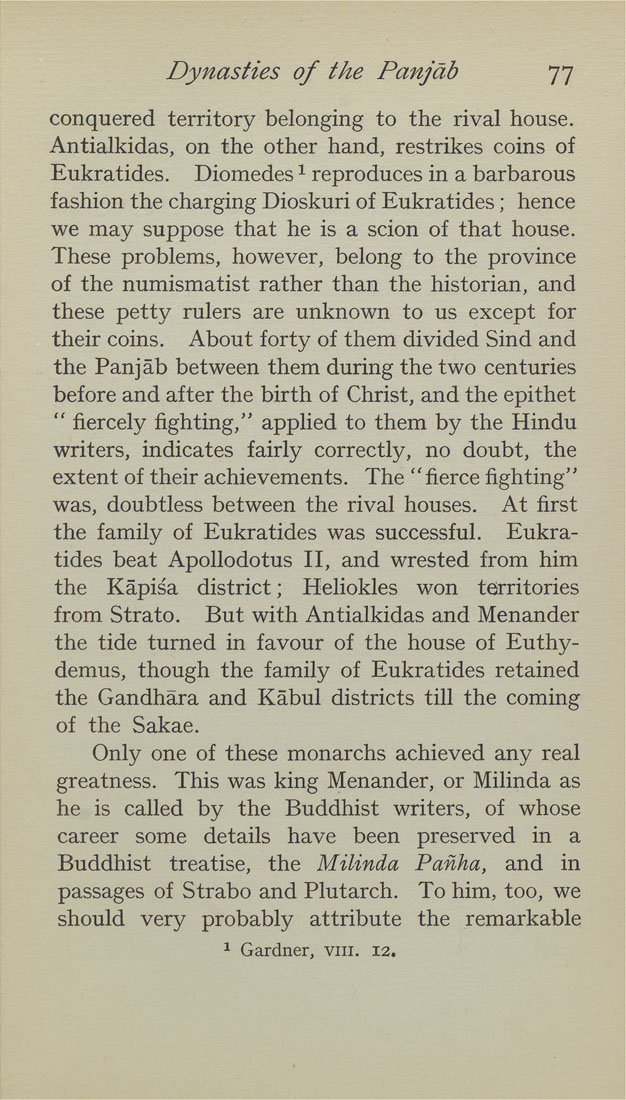Dynasties of the Panjab 77
conquered territory belonging to the rival house.
Antialkidas, on the other hand, restrikes coins of
Eukratides. Diomedes ^ reproduces in a barbarous
fashion the charging Dioskuri of Eukratides; hence
we may suppose that he is a scion of that house.
These problems, however, belong to the province
of the numismatist rather than the historian, and
these petty rulers are unknown to us except for
their coins. About forty of them divided Sind and
the Panjab between them during the two centuries
before and after the birth of Christ, and the epithet
" fiercely fighting," applied to them by the Hindu
writers, indicates fairly correctly, no doubt, the
extent of their achievements. The " fierce fighting"
was, doubtless between the rival houses. At first
the family of Eukratides was successful. Eukra¬
tides beat ApoUodotus II, and wrested from him
the Kapisa district; Heliokles won territories
from Strato. But with Antialkidas and Menander
the tide turned in favour of the house of Euthy¬
demus, though the family of Eukratides retained
the Gandhara and Kabul districts till the coming
of the Sakae.
Only one of these monarchs achieved any real
greatness. This was king Menander, or Milinda as
he is called by the Buddhist writers, of whose
career some details have been preserved in a
Buddhist treatise, the Milinda Panha, and in
passages of Strabo and Plutarch. To him, too, we
should very probably attribute the remarkable
^ Gardner, viii. 12.
|








